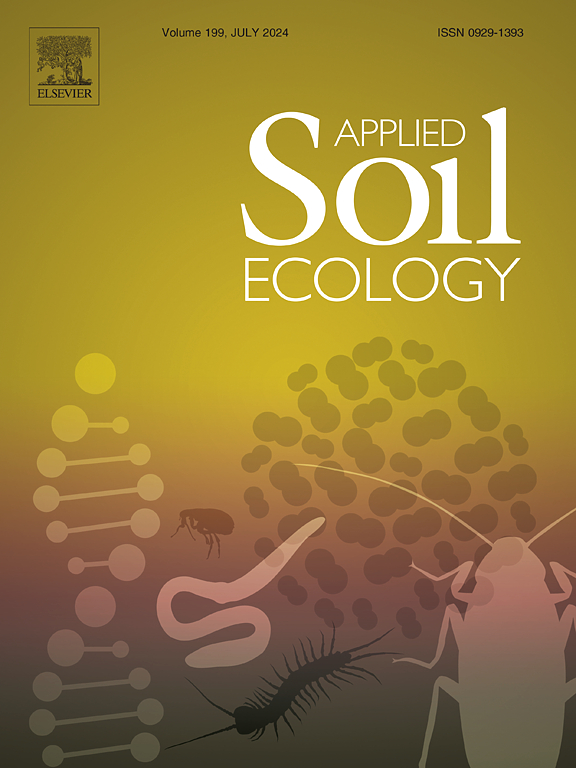Landscape fragmentation impacts springtail community assembly in subtropical agroecosystems
IF 4.8
2区 农林科学
Q1 SOIL SCIENCE
引用次数: 0
Abstract
This study investigated the impact of landscape fragmentation on springtail (Collembola) communities in subtropical regions. We collected soil core samples across landscapes with Low, Medium, and High fragmentation levels. Springtail morphotypes were identified and characterized using the Eco-Morphological Index (EMI), incorporating physical, chemical, and microbiological properties of the soil and litter. Our findings reveal a negative impact of fragmentation on springtail diversity. Landscapes with lower fragmentation exhibited higher beta diversity, indicating a more diverse and distinct assemblage of morphotypes. This pattern persisted across two sampling periods. Additionally, these landscapes shared a greater proportion of morphotypes with those of intermediate fragmentation compared to highly fragmented areas, highlighting the importance of habitat connectivity. Specialist morphotypes, which occur in less than one-third of the samples within a specific habitat type, were more prevalent in less fragmented areas, suggesting their vulnerability to habitat disturbances associated with fragmentation. Notably, specialist morphotypes (Ed1 and Ed8) were found exclusively in less fragmented landscapes during the first sampling. In addition, our findings reveal a positive correlation between geographic distance and community dissimilarity at the regional scale, with the highest beta diversity observed in the least fragmented landscape. Overall, this study provides compelling evidence that landscape fragmentation negatively impacts springtail communities, affecting their diversity, structure, and niche occupancy. These findings emphasize the importance of considering fragmentation in conservation practices to protect springtail biodiversity and maintain healthy ecosystems.

求助全文
约1分钟内获得全文
求助全文
来源期刊

Applied Soil Ecology
农林科学-土壤科学
CiteScore
9.70
自引率
4.20%
发文量
363
审稿时长
5.3 months
期刊介绍:
Applied Soil Ecology addresses the role of soil organisms and their interactions in relation to: sustainability and productivity, nutrient cycling and other soil processes, the maintenance of soil functions, the impact of human activities on soil ecosystems and bio(techno)logical control of soil-inhabiting pests, diseases and weeds.
 求助内容:
求助内容: 应助结果提醒方式:
应助结果提醒方式:


